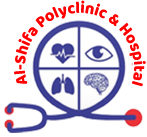Lupus, or systemic lupus erythematosus (SLE), is a chronic autoimmune illness where the body’s immune system mistakenly attacks healthy tissues and organs. This causes inflammation and damage to various body parts, including the kidneys, brain, heart, lungs, skin, and joints. Although the precise cause of lupus is unknown, hormonal, environmental, and genetic factors are thought to contribute.
Symptoms
The symptoms of lupus can vary greatly from person to person and may appear gradually over time. Typical signs and symptoms include:
Fatigue
An ongoing state of weariness and depletion that doesn’t go away with rest.
Joint Pain and Swelling
Knees, hands, and wrists are frequently affected by joint pain and swelling.
Skin Rashes
These include the well-known rash that forms a butterfly pattern over the nose and cheeks.
Photosensitivity
Increased susceptibility to sunlight, known as photosensitivity, can result in or exacerbate skin rashes.
Fever
Mild fevers with no discernible reason.
Hair Loss
Hair loss or thinning.
Kidney Problems
Kidney issues include kidney inflammation (nephritis), which can cause proteinuria (protein in the urine), as well as kidney swelling (edema).
Chest Pain
Pain that develops with deep breathing due to inflammation in the pericardium or pleuritis, the linings surrounding the lungs.
Nose and Mouth Ulcers
Excruciating ulcers in the nose and mouth.
Raynaud’s Phenomenon
When exposed to cold or stress, fingers and toes might turn white or blue.
Neurological Symptoms
These include headaches, vertigo, seizures, and memory issues.
Diagnosis
Lupus can be challenging to diagnose as its symptoms frequently resemble those of other illnesses. Diagnosis often involves:
Medical History and Physical Examination
A comprehensive review of the patient’s medical history and a thorough physical examination.
Laboratory Examinations
- Blood Tests: To identify inflammation, including erythrocyte sedimentation rate (ESR), C-reactive protein (CRP), and complete blood count (CBC).
- Antinuclear Antibody (ANA) Test: A positive ANA test indicates the presence of autoantibodies, which are often found in lupus.
- Specific Autoantibodies: Such as antibodies against dsDNA, anti-Smith (Sm), anti-Ro/SSA, and anti-La/SSB.
Urine Tests
To check for blood or protein in the urine, indicating kidney involvement.
Imaging Studies
Techniques like CT scans, echocardiograms, and X-rays to assess organ involvement.
Biopsy
In some cases, a skin or kidney biopsy may be performed to confirm the diagnosis.
Treatment
The goals of treating systemic lupus erythematosus (Lupus) are to minimise organ damage, control inflammation, avoid flare-ups, and manage symptoms. Treatment plans are highly individualised, as each person is affected differently. Here is a comprehensive overview of the available treatment options:
Medications
- NSAIDs (Nonsteroidal Anti-Inflammatory Drugs)
- Goal: To lessen inflammation and pain.
- Examples: Naproxen and Ibuprofen.
- Usage: Often used to treat mild symptoms like fever and joint pain.
- Antimalarial Medication
- Goal: To manage joint discomfort, fatigue, and skin rashes.
- Example: Hydroxychloroquine (Plaquenil).
- Usage: Widely prescribed for all lupus patients due to its broad efficacy and safety profile.
- Corticosteroids
- Goal: To control acute flare-ups and severe inflammation.
- Examples: Prednisone and methylprednisolone.
- Usage: Used for short-term relief of severe symptoms; prolonged use should be avoided to prevent side effects like weight gain, osteoporosis, and diabetes.
- Immunosuppressive Agents
- Goal: To reduce disease activity and suppress the immune system.
- Examples: Methotrexate, mycophenolate mofetil (CellCept), and azathioprine (Imuran).
- Usage: Regular monitoring is necessary due to potential side effects, such as an increased risk of infection. Used for more severe disease or when other treatments are ineffective.
- Biologic Agents
- Goal: To target specific components of the immune system.
- Examples: Belimumab (Benlysta) and Rituximab.
- Usage: Newer medications, particularly useful for targeting B cells involved in the disease process, are administered to patients not responding well to conventional treatments.
Lifestyle Modifications
Sun Protection
Goal: Prevent photosensitivity reactions.
Steps: Use high-SPF sunscreen, wear protective clothing, avoid sun exposure, and install UV-blocking window films.
A Nutritious Diet
Goal: To reduce inflammation and maintain overall health.
Diet: A balanced diet rich in whole grains, fruits, vegetables, lean protein, and healthy fats is recommended. Limiting intake of processed foods, sugar, and salt.
Frequent Exercise
Goals: To reduce fatigue, maintain joint function, and improve cardiovascular health.
Exercises: Low-impact activities like walking, swimming, and yoga.
Handling Stress
Goal: To prevent stress-induced flare-ups.
Techniques: Mindfulness, meditation, relaxation techniques, and counseling.
Quitting Smoking
Goal: To improve overall health and reduce the risk of cardiovascular complications.
Techniques: Medications, behavioral therapy, and support groups.
Monitoring and Follow-Up
Frequent Health Check-Ups
Goal: To monitor disease progression and adjust treatment as needed.
Frequency: Typically every three to six months, more frequently during active disease phases.
Laboratory Examinations
Goal: To assess organ function and detect any complications.
Tests: Blood tests (CBC, liver and kidney function tests), urine tests, and specific antibody measurements.
Imaging Research
Goal: To evaluate organ involvement.
Techniques: CT scans, MRIs, ultrasounds, echocardiograms, and X-rays.
Supportive Therapies
Occupational and Physical Therapy
Goal: To maintain joint function and improve daily living.
Services: Ergonomic advice, assistive devices, and tailored exercise programs.
Support for Mental Health
Goal: To address the psychological and emotional impact of lupus.
Resources: Support groups, counseling, and psychological therapy if needed.
Experimental and Emerging Therapies
Clinical Examinations
Goal: To explore new treatments and improve existing ones.
Engagement: Patients can participate in clinical trials to access cutting-edge treatments.
Stem Cell Replacement Therapy
Goal: To reset the immune system in severe, refractory cases.
Current Status: Still under investigation; not yet a standard treatment.
Gene Therapy
Goal: To address the genetic factors of lupus.
Current Status: In experimental stages; potential future treatment.
Conclusion
Systemic lupus erythematosus (Lupus) is a complex and chronic autoimmune disease that affects multiple organ systems, presenting a wide range of symptoms from joint pain and fatigue to severe organ damage. While the exact cause is unknown, treatment is highly individualised, focusing on managing symptoms, reducing inflammation, preventing flare-ups, and minimizing organ damage. This requires a combination of medications, lifestyle changes, regular monitoring, and supportive therapies. Advances in medical research and emerging therapies continue to improve the prognosis and quality of life for those with lupus.
